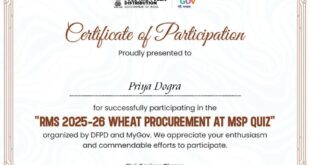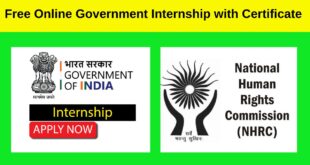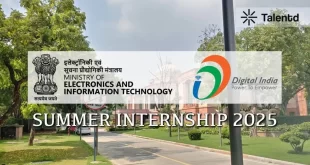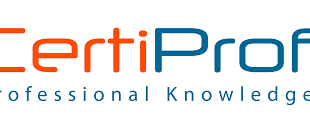Information Technology Management Professional Certification
Information Technology Management involves overseeing and directing the use of technology resources within an organization.
Course overview
Information Technology Management (ITM) is the process of overseeing and directing an organization’s technology resources to meet business objectives. It involves strategic planning, implementation, and maintenance of IT systems and infrastructure, including hardware, software, networks, and data management. ITM ensures that technology aligns with organizational goals, enhances operational efficiency, and supports innovation. Responsibilities include managing IT projects, optimizing performance, ensuring cybersecurity, and budgeting for technology investments. Effective ITM enables organizations to leverage technology for competitive advantage, streamline operations, and address emerging challenges, thereby driving overall business success.
ENROLL HERE : Information Technology Management Professional Certification
What is the primary goal of IT management?
A) To increase company profits
B) To manage technology resources efficiently
C) To enhance employee productivity
D) To develop new software
2.
Which of the following is a key component of IT infrastructure?
A) Financial statements
B) Human resources
C) Servers
D) Marketing strategies
3.
What does IT governance focus on?
A) Hiring staff
B) Risk management
C) Network configuration
D) Software development
4.
Which IT management framework emphasizes alignment between IT and business objectives?
A) COBIT
B) Six Sigma
C) Agile
D) ITIL
5.
What is ITIL primarily used for?
A) Software development
B) IT service management
C) Network design
D) Data analysis
6.
Which term refers to the practice of protecting information systems from cyber threats?
A) IT auditing
B) Cybersecurity
C) Data mining
D) IT compliance
7.
In IT management, what does SLA stand for?
A) Service Level Agreement
B) System Load Average
C) Security Log Analysis
D) Software Licensing Agreement
8.
What is the primary purpose of IT project management?
A) To develop new IT policies
B) To ensure IT projects are completed on time and within budget
C) To hire IT staff
D) To manage daily IT operations
9.
Which technology helps in managing and automating business processes?
A) Enterprise Resource Planning (ERP)
B) Customer Relationship Management (CRM)
C) Business Intelligence (BI)
D) All of the above
10.
Which of the following is a common IT management challenge?
A) Employee engagement
B) Technology integration
C) Market research
D) Product design
11.
What does the acronym ERP stand for in IT management?
A) Enterprise Resource Planning
B) Emergency Recovery Plan
C) Enhanced Resource Programming
D) Electronic Resource Processing
12.
Which role is typically responsible for managing the overall IT strategy in an organization?
A) IT Technician
B) IT Support Specialist
C) Chief Information Officer (CIO)
D) Network Administrator
13.
What is a key benefit of cloud computing for IT management?
A) Increased hardware requirements
B) Higher capital expenditure
C) Scalability and flexibility
D) Limited access to data
14.
Which of the following best describes Business Continuity Planning (BCP)?
A) Planning for future technology trends
B) Ensuring IT systems remain operational during disruptions
C) Developing new software applications
D) Managing IT personnel
15.
What is the primary focus of IT risk management?
A) Enhancing software performance
B) Identifying and mitigating potential technology-related risks
C) Increasing server capacity
D) Reducing IT staff turnover
16.
Which IT management practice involves evaluating and improving IT processes?
A) Change management
B) Process improvement
C) Incident management
D) Configuration management
17.
In IT management, what does the term “scalability” refer to?
A) The ability to increase or decrease IT resources as needed
B) The ease of installing software
C) The speed of data processing
D) The cost of IT services
18.
What does IT compliance ensure?
A) Adherence to internal IT policies and external regulations
B) Software functionality
C) Network speed
D) Employee training
19.
Which tool is commonly used for IT performance monitoring?
A) Project Management Software
B) Network Monitoring Tools
C) CRM Systems
D) ERP Systems
20.
What is the main objective of IT service management (ITSM)?
A) To develop new IT products
B) To ensure IT services meet the needs and expectations of users
C) To hire IT personnel
D) To manage IT budgets
Here are the answers :
B) To manage technology resources efficiently
C) Servers
B) Risk management
A) COBIT
B) IT service management
B) Cybersecurity
A) Service Level Agreement
B) To ensure IT projects are completed on time and within budget
D) All of the above (ERP, CRM, and BI are all technologies used to manage and automate business processes)
B) Technology integration
A) Enterprise Resource Planning
C) Chief Information Officer (CIO)
C) Scalability and flexibility
B) Ensuring IT systems remain operational during disruptions
B) Identifying and mitigating potential technology-related risks
B) Process improvement
A) The ability to increase or decrease IT resources as needed
A) Adherence to internal IT policies and external regulations
B) Network Monitoring Tools
B) To ensure IT services meet the needs and expectations of users
 Priya Dogra – Certification | Jobs | Internships
Priya Dogra – Certification | Jobs | Internships



